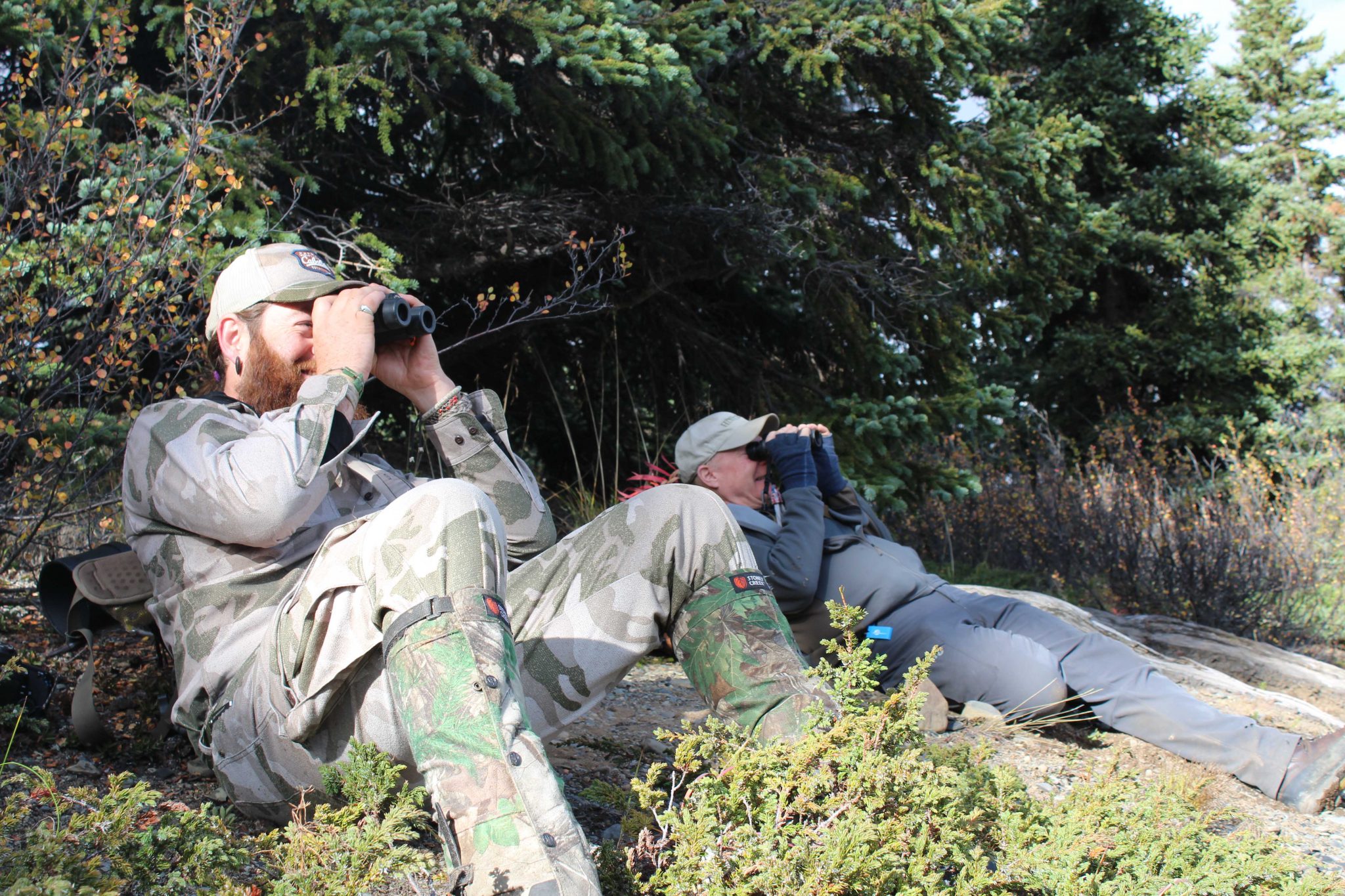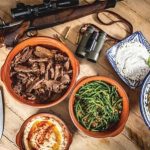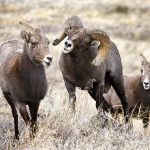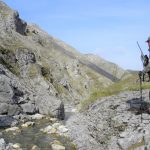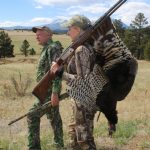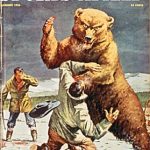How do you know if the guide who takes you on your dream hunt is any good?
Have you ever been on an outfitted hunt where you suspected your guide had been the cook or maybe the wrangler the day before you showed up? Well, perhaps he had.
Turns out the title “guide” can be used rather loosely depending on where you hunt. In North America, there are no federal laws that define, test, or regulate hunting guides–and often no state or provincial regulations, either.
In other words, your guide could really have been the cook–or your outfitter’s brother-in-law, the local bartender, or some cowboy dragged in off the street. And it all would have been legal. Caveat emptor.
I once suffered nine days at the hands of a sheep guide who’d never guided a sheep hunter, never hunted a sheep himself, and never even touched one, dead or alive, unless you counted domestic woolies on his Dad’s farm. He stalked rams from below, sometimes with the wind at his back, and had a tough time deciding if any were legal. Needless to say, we did not get a ram on that trip.
Then there was the elk guide who’d just graduated from a guide school in Montana. He tied a mean diamond hitch and wore a pretty red silk bandana, but had yet to hunt an elk. Another time, following a shouting match with the outfitter, our guide walked out and our outfitter was later overheard whispering to the cook, “You ever guided for moose?”
Desperate times call for desperate measures. But how do make sure you aren’t the victim of those desperate measures?
Alas, not all guides are trained, experienced, rugged hunters, shooters, or even backcountry campers. Even “officially licensed” guides aren’t necessarily skilled outdoorsmen. Many western states, including Idaho, Montana, Colorado, Wyoming, and Alaska, test, regulate, and license guides through State Licensing Boards. Until a prospective guide passes the appropriate tests, he cannot legally guide hunters. In many, perhaps most, cases, however, the Board of Guides and Outfitters is more interested in keeping track of illegal guiding activity (guiding without a license) than guide competency. On the sixty-question exam, eight questions pertain to woodsmanship and game care, two to survival, one to firearm safety, nine to first aid, and thirty-eight to hunting and outfitting laws. This doesn’t necessarily mean a person passing this written exam doesn’t have good guiding skills, but neither does it ensure it. To my way of thinking, a Guide and Outfitter Licensing Board should test woodsmanship and hunting skills. To their credit, some do require proof of having taken and passed a basic first-aid class, so your guide can at least save you from frostbite after he gets you lost in the snow.
Lest you think I overplay this, here are the qualifications for becoming a hunting guide in Montana: the appropriate fee: $100.00; proof of current First Aid; current Montana Conservation License; completed application.
That’s it. Now, the Forest Service and Bureau of Land Management, both Federal agencies, specify certain requirements before guides are allowed to operate on their respective jurisdictions –mostly First Aid certification and demonstrated knowledge of property boundaries and land ownership. But nothing about how to recognize mule-deer browse or antelope territorial markers.
If any of this makes you nervous, you’ll love learning that most states allow private landowners, on their property only, to guide or to allow family or friends (with no qualifications whatsoever) to guide hunters. This isn’t necessarily bad. Grandpa might not be able to hobble more than ten yards from the truck, but there’s a good chance he’s seen mule deer bucks hide in the same sage draw for five decades. I’d rather be guided by him than a twenty-five-year-old kid who knows drop and drift tables for the ten most popular cartridges and can bone an elk in thirty minutes but doesn’t know where the game is.
To its credit, Alaska enforces the most stringent requirements on its guides, granting them licenses for Assistant, Class-A Assistant, Registered, and Master Guide based on the number of years they’ve hunted Alaska and/or been employed as hunting guides. In addition, they must provide lists of clients they’ve guided (references). This tactic recognizes and rewards the true proof of guiding competence—real-world experience. A Master Guide must have been licensed in Alaska as a Registered Guide or guide-outfitter for at least twelve of the previous fifteen years and provide a list of twenty-five big-game hunters he or she has guided personally. Rest assured, anyone who has survived that long as an Alaska guide knows his or her stuff.
However, and this is an important point, no degree of testing or licensing can create or guarantee a great guide. There are simply too many intangibles, too many loopholes, and too many qualities that can’t be tested. Ultimately, judging a guide’s ability to work well with and for you comes down to you, with a little help from your outfitter.
Your outfitter is responsible for hiring guides. You are trusting his or her judgment. If you know and trust your outfitter, chances are he’ll provide good guides. If you don’t know the outfitter well, ask who your guide will be, how experienced he or she is (and don’t denigrate women guides, who are some of the best), what her personality is like, and how he likes to hunt. The idea is to match yourself physically and philosophically with your guide. You don’t want a long-legged, impatient mountain climber if you’re a slow-and-steady, still-hunting kind of guy. Nor do you want a cowboy permanently glued to a saddle when you prefer to tiptoe through doghair timber and surprise an elk. Ask also about personal habits that might drive you nuts, such as high-volume snoring, smoking, excessive verbosity, or a sour outlook.
Most outfitters will try to match you to a guide, but few can guarantee your chosen Moses will still be around when you show up. Employee turnover can be fairly high at some outfitters, what with the hard work, long hours, and living cheek to jowl with other guides week after week. Still, if you discover your outfitter burns through a fresh set of guides every year, it might not be a bad idea to investigate the outfitter.
If you’ve hunted with a guide before or have had a trusted friend recommend one, specifically request THAT guide and write it into your contract. Hey, it’s your hunt. Why pay for something you’re not getting? In 2003 I hunted with guide Dawson Deveny at Canadian Mountain Outfitters in the British Columbian wilderness and appreciated him so much that I asked outfitter Bryan Martin for him specifically on a subsequent hunt. The kid is mature and wise beyond his twenty-seven years. He is tough, persistent, enthusiastic, solicitous, and sets a pace to match the hunter, yet he encourages and pushes when necessary to get a job done. Another outstanding young guide is Lance Kronberger, who recently started his own outfitting business, Freelance Outdoor Adventures in Anchorage. Like Dawson, Lance is not only extremely competent but optimistic and productive. The kid studies and knows sheep like a librarian knows the Dewey Decimal System. Not all great guides are young. During a Colorado elk hunt with Tenderfoot Outfitters I was fortunate to be paired with Tal Underwood. Roughly sixty years old, Tal danced up mountains with the best of them, maintained his enthusiasm despite wind and snow, and knew just where to go to get the drop on late-season, spooky bulls.
Despite the pessimism and warnings in this piece, most of today’s hunting guides do a difficult job extremely well. I’m regularly surprised and amazed at how they maintain the energy and positive attitude to deal with bad weather, broken equipment, stubborn horses, and griping hunters day after day after day. We probably have better odds of finding great guides than they do of finding great hunters.
